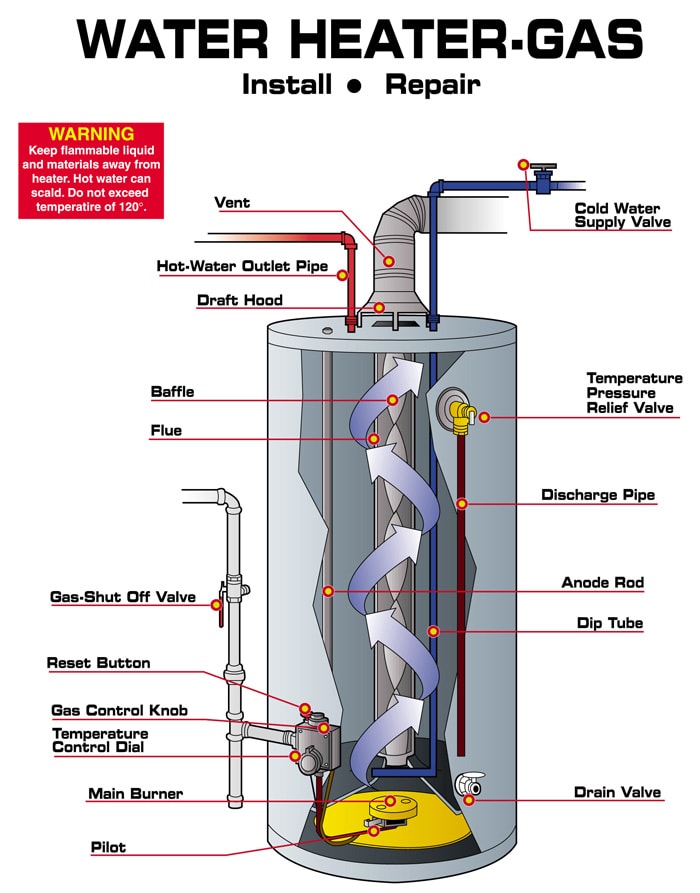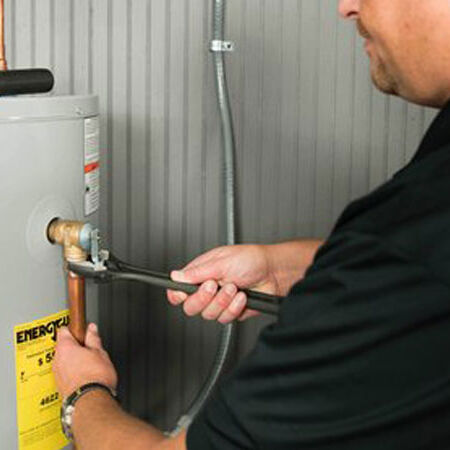Affordable water heater installation services in Yorba Linda for all homes
Affordable water heater installation services in Yorba Linda for all homes
Blog Article
Do It Yourself Water Heating System Installation: Vital Actions for Success
When considering a DIY water heating unit setup, it is vital to approach the task with a systematic way of thinking, as the process involves numerous crucial steps that can considerably impact both security and efficiency. Choosing the appropriate water heating system for your details demands is just the start; preparing the installment area and recognizing the needed devices and products are similarly vital.
Picking the Right Water Heating System
When selecting a hot water heater, it is necessary to consider numerous crucial variables to make sure ideal efficiency and efficiency - water heater installation. Firstly, assess the kind of water heating system that finest fits your needs. Choices include tankless, storage space container, and heatpump hot water heater, each offering distinctive benefits in regards to power performance and space requirements
Following, evaluate the ability needed for your house. A larger household might require an unit with a better gallon ability or a tankless system that can supply continual hot water. It's also important to think about the power resource; usual choices consist of electrical, all-natural gas, and gas. Each power type has effects for installment prices and long-lasting power costs.
Power performance is an additional vital variable. Try to find devices with a high Energy Element (EF) rating, as these designs take in less energy and can significantly decrease energy expenses. In addition, look for warranties and brand dependability, as these can show the long life and maintenance demands of the system. By meticulously assessing these factors, you can select a water heating unit that lines up with your home's specific needs, making sure convenience and performance for years ahead.
Devices and Materials Needed
Successfully installing a water heating unit requires not only the appropriate choice of unit but also the proper devices and products. Prior to starting your do it yourself task, guarantee you have a thorough list of items to promote a smooth setup procedure.
Crucial tools consist of a pipe wrench, flexible pliers, and a screwdriver set (both flathead and Phillips), which will help you take care of different installations and connections. Furthermore, a drill with appropriate little bits is required for installing brackets or making any called for openings. For security, a voltage tester is crucial, particularly when managing electrical water heaters.
You will additionally need a versatile water supply line, which can be either braided stainless steel or PVC, depending on your choices and local codes. By gathering these materials and tools beforehand, you established the phase for a successful water heater installation.
Preparing for Setup
Prior to beginning the installation of your hot water heater, it is important to evaluate the installation website to ensure it fulfills all necessary demands. Beginning by confirming that the area is well-ventilated, especially for gas hot water heater, to avoid the buildup of hazardous gases. Inspect for the schedule of needed links, including water system lines and electrical outlets, ensuring they remain in great condition and correctly situated.

This proactive technique not just guarantees conformity with local building codes however likewise enhances the long life and efficiency of the water heater. Proper prep work sets the phase for a smooth installment procedure and aids protect against unanticipated issues.
Step-by-Step Setup Process
With the prep work total and all essential assessments performed, the following stage entails the step-by-step installation of your water heater. For tank-type water heating systems, connect the cool water supply line to the inlet, commonly noted in blue, and the warm water line to the outlet, typically marked in red.
Next, protect the temperature level and pressure alleviation shutoff, which is vital for safety and security. Affix the discharge pipe to this shutoff, directing it towards the floor or an ideal water drainage location. For electric designs, link the power supply by stripping the cords and safeguarding them to the heater's terminals according to the maker's instructions.
If you are mounting a gas hot water heater, guarantee the gas line is linked effectively and look for leaks using a soap solution. After all connections are made, fill the container with water before turning next on the power or gas supply. Allow the water heating system to reach the preferred temperature and check for any leaks around all connections.
Ensuring Safety and Effectiveness
Routinely ensuring safety and efficiency during the installation and operation of your hot water heater is critical for optimum efficiency and long life. Begin by selecting an ideal place that adheres to neighborhood building ordinance and offers appropriate air flow. Guarantee that the location is cost-free from flammable materials and has adequate space for important source upkeep and inspections.

After setup, conduct routine look at the device to discover leakages, corrosion, or uncommon sounds. Establish the thermostat to a risk-free temperature level, usually around 120 ° F, to avoid hot and boost energy efficiency. Shield pipelines to reduce heat loss, which adds to decrease power bills.
Conclusion
In conclusion, effective DIY water heating unit installment rests on mindful preparation and execution. Selecting the appropriate hot water heater, preparing the installment location, and adhering to an organized installation process are vital actions. Complying with safety guidelines throughout the installation makes certain both safety and security and efficiency. Furthermore, routine upkeep checks post-installation will certainly add to the optimal efficiency of the hot water heater, ultimately enhancing the long life and efficiency of the system. Effectively setting the thermostat even more ensures safe operation.
When taking into consideration a DIY water heating unit installment, it is crucial to approach the job with a systematic way of thinking, as the procedure involves numerous vital steps that can here significantly impact both safety and effectiveness.Prior to starting the installation of your water heating system, it is essential to analyze the setup website to guarantee it satisfies all essential needs. For tank-type water heating systems, link the cold water supply line to the inlet, usually marked in blue, and the warm water line to the electrical outlet, generally designated in red.Consistently ensuring safety and security and effectiveness during the installation and procedure of your water heating unit is essential for ideal performance and longevity. Selecting the proper water heating unit, preparing the installation location, and complying with a systematic installation process are essential steps.
Report this page